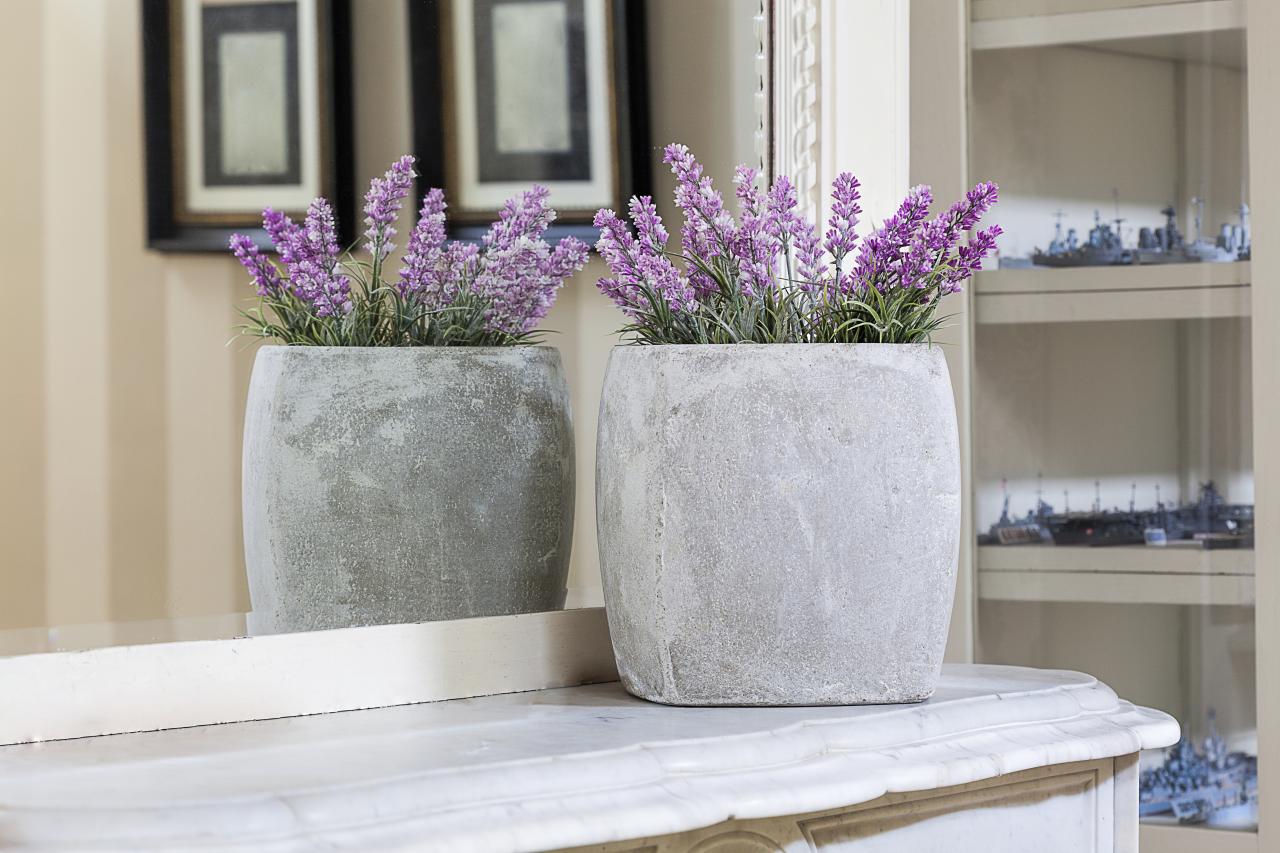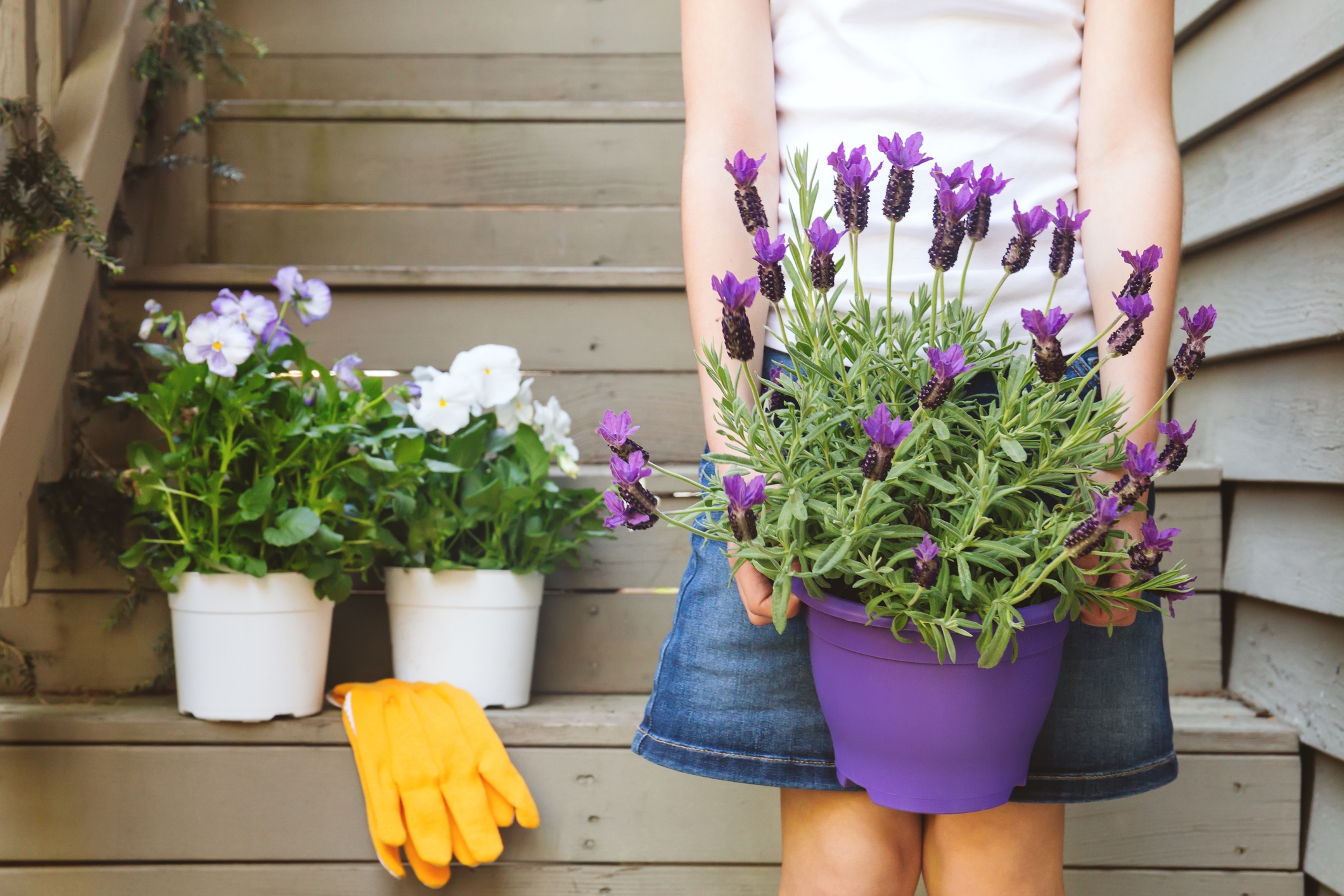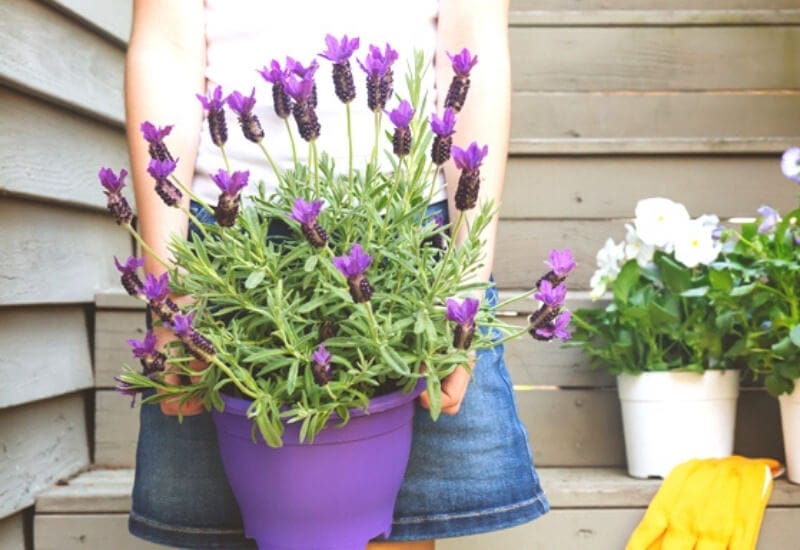
French lavender is the best variety to cultivate indoors. French lavenders flower for a longer period of time and can withstand changing indoor temperatures better than other lavender species. Select a smaller type that will fit easily indoors on a window sill, such as Lavandula stoechas ‘Anouk’.
English lavenders frequently do not flower to their full capacity when grown inside, whereas French lavenders can flower for several months.
Table of Contents
Why French lavenders are best for growing indoors

Additionally, they are the most heat- and drought-resistant lavender varieties, which is significant because indoor lavender pots or containers usually have soil that dries up rather quickly. (However, all varieties of lavender flourish well in dry soil and require only one watering every two weeks during the growing season.) For further advice on how to water lavender plants, read my guide.
Other lavender species can be grown indoors, but French lavenders often flower more than English or hybrid lavenders do.
This is so because English lavenders are more sensitive to temperature changes throughout the year. The most flowers are often produced by English lavenders after a period of cooler weather, which allows the plant to go through its normal cycle of winter hibernation.
Because the plant depends more on the temperature contrast to induce flowering in the spring and summer months, English lavenders do not flower to their full capacity when temperatures do not change sequentially over the seasons.
Because of this, English lavenders may produce fewer flowers and have a shorter flowering season because of the relatively constant temperature of a house, which can even be warmer in the winter due to heating.
French lavenders, on the other hand, are very at home indoors and can bloom both inside and outside.
If the conditions are ideal, French lavender will begin to bloom as early as May and continue to do so for months far into the fall. This is significantly more than the majority of other grown lavenders, and it is delightful to observe the lavender in bloom for such a prolonged period of time with its distinctive crown of petals.
It should be mentioned that while French lavender does flower for a longer period of time than English lavenders, the scent is more subdued. Nevertheless, the leaf does release a wonderful scent all year long.
For the complete how-to and recommended techniques for growing French lavender, read my post.
Which variety of lavender is best for indoors?

The majority of French lavender cultivars are fairly huge when fully grown; for example, Lavandula stoechas ‘Regal Splendour’ is 30 inches (76 cm) tall and 24 inches (60 cm) broad, making it far too big to keep indoors on a window sill.
Lavender needs as much light as possible, therefore you should put it in a window that gets plenty of sunlight.
Since it won’t take up too much space, a small French lavender variety like Lavandula stoechas ‘Anouk’ is considerably more suitable for growing inside.
This lovely French lavender grows well in pots and containers, is small enough to be placed on a sunny window sill, produces a lot of flowers, and has a delicate scent.
Even with proper care, French lavenders will only last 4 to 5 years even though they adapt to indoor life better than other lavender species. When grown inside, English lavender cultivars like “Hidcote” and “Munstead” will live far longer than French lavenders, but they won’t flower as well or for as long.
Tips for Growing Lavender Indoors
- Lavender should not be placed directly in the path of forced air or heating. It’s nice to occasionally have a little breeze from an open window because it lowers the risk of developing a fungus.
- Put your lavender in a south-facing window or another location where it will get the maximum sunshine. Because they do not thrive in the shade, lavender plants flower less the less light they receive.
- Pick a pot or container that has drainage holes in the base at all times. It is crucial that extra water can drain out the bottom of the container since lavender plants require the soil to dry out between waterings in order to prevent root rot.
- Avoid setting a tray or platter under the pot of your lavender plants because this can collect water and make the plants vulnerable to root rot.
- As lavenders are accustomed to dryer environments and will not tolerate humidity, keep them out of any extremely humid rooms or parts of the house, such as the bathroom or kitchen.
To find out how to properly care for lavender inside, read my post.
Key Takeaways:
- French lavenders adapt to indoor temperature changes more readily than other lavender species.
- When planted indoors, other types of lavender often do not flower as well as French lavender.
- If properly maintained for and frequently deadheaded, French lavender grows very well in pots and containers and will bloom for several months from May until September.
- Lavandula stoechas ‘Anouk,’ a kind of French lavender, is an excellent plant for growing indoors because it is quite compact and will easily flourish there in a sunny window without any issues.
